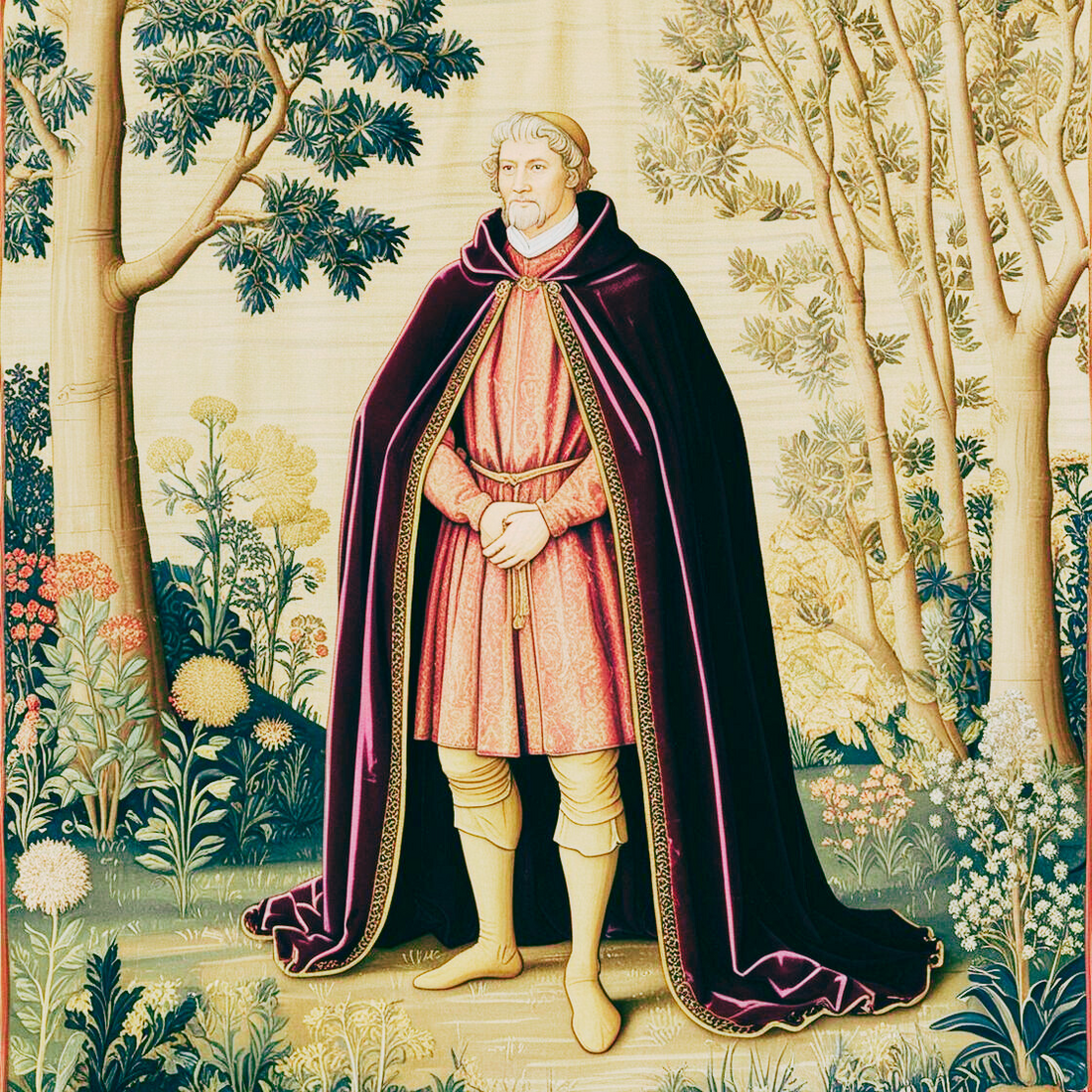
How was purple dye made in medieval Europe? Hint: it's rather unappealing.
The Art of Purple Dye in Medieval Europe
Ah, purple—the color that whispers wealth, shouts royalty, and occasionally mutters, "Do you have any idea how expensive I am?" In medieval Europe, this shade was more than a mere indulgence for the wealthy; it was a blaring sartorial announcement of power and prestige. Producing it, however, was an exercise in patience, ingenuity, and, dare I say, masochism. Let us delve into the mysterious and occasionally malodorous world of medieval dye-making.
The Origins of Purple Dye
The tale begins with Tyrian purple, a dye so ancient and coveted that even the Romans were blushing with envy—or rather, with the dye itself. Extracted from the mucus of sea snails (yes, you read that correctly), this color was the darling of the Phoenicians, who somehow decided it was worth braving the stench to achieve sartorial supremacy¹. By the Middle Ages, however, the collapse of trade routes and Rome itself meant that Tyrian purple became the stuff of wistful legends². Enter the Europeans, who, with their signature blend of ingenuity and desperation, cobbled together alternative methods for making purple³.
Woad: The Medieval Workhorse
If Tyrian purple was the champagne of dyes, then woad (Isatis tinctoria) was its sturdy tankard of ale. Grown widely in Europe, woad provided a reliable (albeit pungent) source of blue dye⁴. But creating purple from woad wasn’t a simple matter of mixing blue with red and hoping for the best. Oh no. This was alchemy of the highest order. Artisans combined woad’s blues with red dyes from plants like madder (Rubia tinctorum) or crushed insects like kermes (Kermes vermilio)⁵. The result? A vibrant, eye-catching purple that screamed, “Look at me, I’m important!”—though only if you could afford it, of course⁶.
The Complex and Odorous Process
Creating purple was not for the faint of heart—or nose. Woad required a fermentation process involving urine (because why not?), which artisans cheerfully collected from their neighbors⁷. Once dyed blue, fabrics were over-dyed with red, a painstaking process that demanded skill, patience, and a tolerance for long hours spent reeking of ammonia⁸. If you ever wondered why medieval nobility looked so grim in portraits, perhaps it’s because their garments came at such an aromatic price⁹.
Purple as a Power Move
As a result of this laborious process, purple was more than a color; it was a status symbol so exclusive that sumptuary laws dictated who could wear it¹⁰. In England, Edward III ensured purple was reserved for royalty and the highest echelons of society¹¹. Peasants dreaming of donning a splash of purple would have to settle for wistfully watching their betters swish by.
In the end, medieval purple was a masterpiece of human ingenuity, symbolizing wealth, power, and the unspoken agreement to ignore how badly it all smelled. If you’re still not impressed, just remember: someone willingly wrangled snails and fermented woad with urine—all so we could look fabulous. Truly, history’s unsung heroes.
Footnotes
- Cardon, D. (2007). Natural Dyes: Sources, Tradition, Technology, and Science. Archetype Publications.
- Netherton, R., & Owen-Crocker, G. R. (2007). Medieval Clothing and Textiles. Boydell Press.
- Barber, E. J. W. (1991). Prehistoric Textiles: The Development of Cloth in the Neolithic and Bronze Ages. Princeton University Press.
- Hohenegger, B. (2007). Liquid Gold: The Lore and Logic of Using Urine to Extract Woad Dye. Chem Heritage Press.
- Biggam, C. P. (1997). "Woad and the Medieval Palette." Anglo-Saxon England, 26, 41–51.
- Kerridge, E. (1985). Textiles in the Age of Elizabeth I. Manchester University Press.
- Hohenegger, B. (2007). Liquid Gold: The Lore and Logic of Using Urine to Extract Woad Dye. Chem Heritage Press.
- Cardon, D. (2007). Natural Dyes: Sources, Tradition, Technology, and Science. Archetype Publications.
- Barber, E. J. W. (1991). Prehistoric Textiles: The Development of Cloth in the Neolithic and Bronze Ages. Princeton University Press.
- Netherton, R., & Owen-Crocker, G. R. (2007). Medieval Clothing and Textiles. Boydell Press.
- Hunt, T. (1998). Clothing Laws and the Symbolism of Power. Cambridge Historical Studies.
- Sumptuary Laws Database. (2020). Accessed from https://www.sumptuarylawsarchive.org.
- Cardon, D. (2007). Natural Dyes: Sources, Tradition, Technology, and Science. Archetype Publications.
